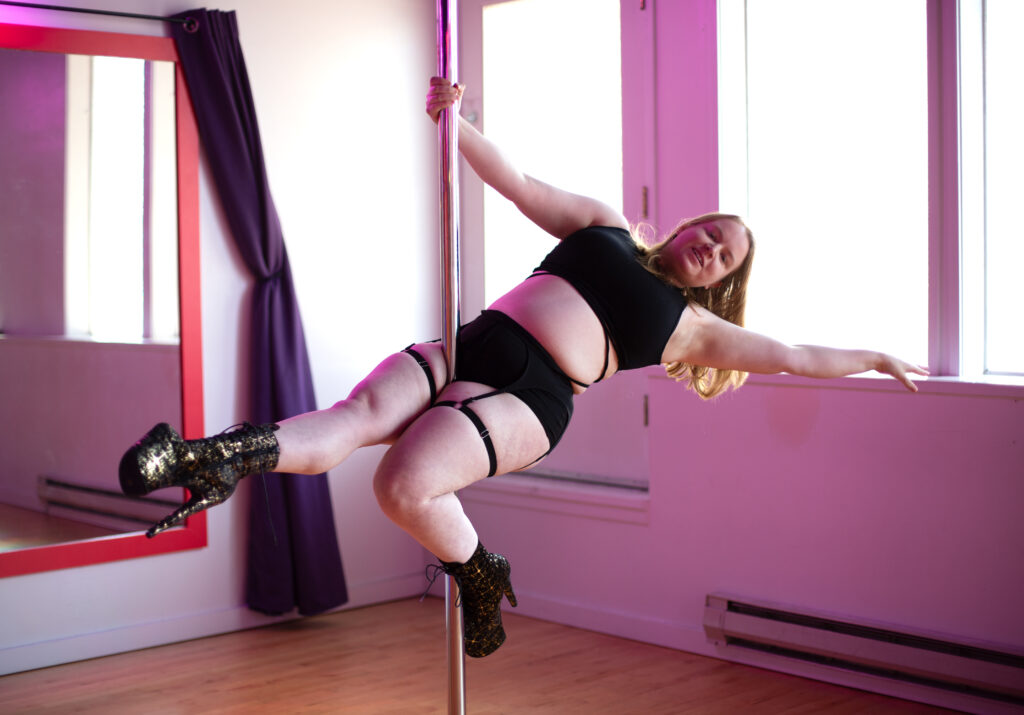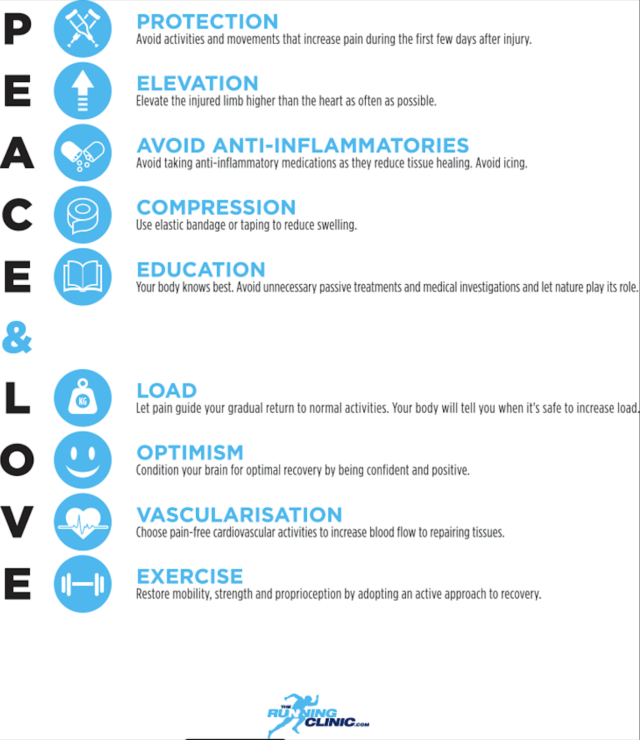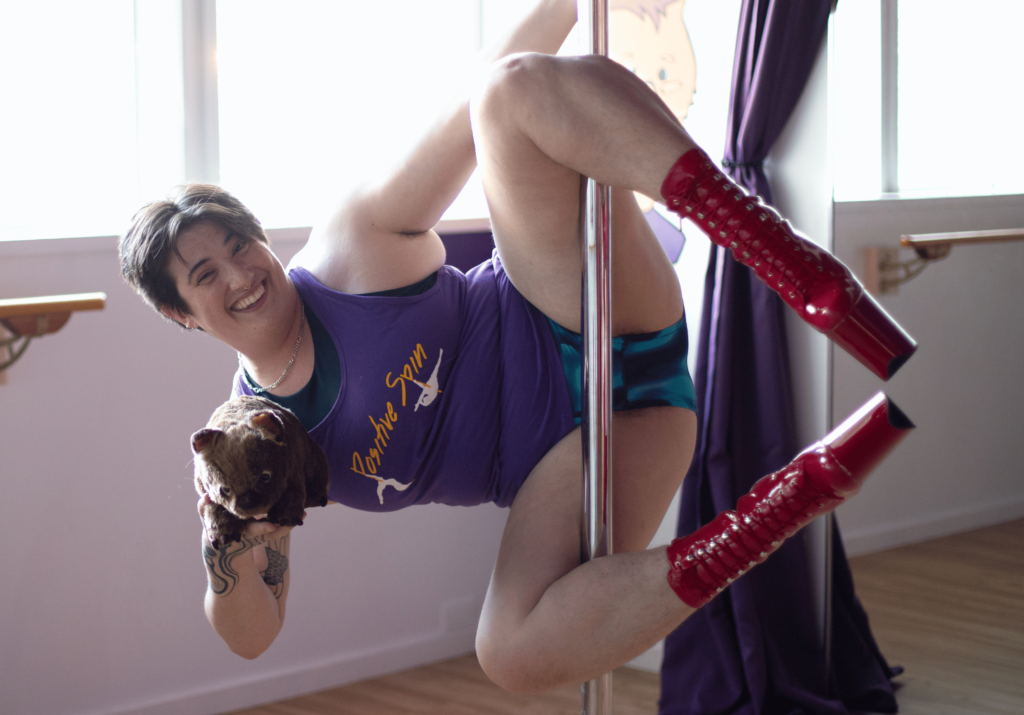Like all sports and activities, pole dancing comes with a risk of injury. At Positive Spin Pole Dance Fitness, we want our students to enjoy pole dancing for a long time, with minimal pain along the way. (At least injury related pain- those pole sits are going to hurt when you start working on them!)
This post includes information about preventing pole dance injuries and for treating them when they do arise. It includes some specific resources and recommendations for seattle pole dancers specifically!

How can I prevent pole dance injuries?
The best way to deal with injuries is to prevent them! But what exactly does that mean for a pole dancer?
Gradually increase your training load
We know- pole dancing is so fun and exciting that when you get started you want nothing more than to pole dance all day every day, but if your body isn’t used to that level of physical activity, it can lead to injuries, which could mean taking even more time off from pole dancing. So while you can work up to taking pole classes 5 days a week, it’s going to take some time. The good news is that beginners can handle a few classes per week if they vary what kind of classes they are taking, which brings us to our next point!
Spend a substanial amount of your pole dance time cross training!
Cross training is doing other activities that supplement your pole dancing by strengthening the muscles that you need to execute pole dance skills. It is also targeting muscles that are less utilized in pole dance to prevent muscle imbalances, which is another leading cause of injury. We offer 4 main types of cross training classes- flexibility, conditioning, handstands, and floorwork. We’ll share more about the unique benefits of each of these in a future post!
Take care of your body outside of class time
Things like eating enough food and getting enough sleep are key to your body’s recovery process after physical activity, so make time for food, water, and rest!
It also doesn’t hurt to do some extra self care, like getting regular massages. If you’re a Seattle pole dancer, one of our pole instructors, Emily Gunter/Forbes is also a massage therapist and you can book with her here. It’s always nice to work with someone who understands your activity of choice, so that if you tell her what you’re working on in pole dance, she’ll know exactly what muscles might need some extra love!
What can I do if I get injured?
Even if you follow all the best advice on injury prevention, if you pole dance for long enough you’re bound to pull or tweak something eventually. We’ve all been there, so we’ve compiled our best tips and advice for recovering and getting back on the pole safely and as quickly as possible!
Best Practices for soft tissue injuries
Soft tissue injuries are injuries to your muscles, tendons, and ligaments. If you have a relatively minor one, there are some guidelines for taking care of them on your own. Whoever makes these guidelines really likes acronyms and you may be familiar with some of the outdated ones like ICE, RICE, PRICE, and POLICE. The current acronym protocol is PEACE & LOVE.
PEACE covers the immediate care after the occurence of an injury, and LOVE covers the subsequent management.

When should i seek medical care for a pole dance injury?
The short and annoying answer is “it depends”, but we do have a few guidelines to help you decide when it’s time to see a professional.
- If it’s a chronic injury lasting longer than 4 weeks and it’s getting worse or keeps coming back.
- If it’s an acute injury lasting longer than 2 weeks or is not trending better after the first week.
Who can i talk to about pole dancing injuries?
“Dr. it hurts when I do this”
Dr.: “Well don’t do that.”
Pole dancing takes this cliche to a whole new level. It can be hard for a regular doctor or physical therapist to understand why it’s so important that you can work on getting a flatter jade split or a twisted grip ayesha. Lucky for us the Seattle pole dance community is blessed with a wealth of resources and people who get it.
Our absolute first choice for Physical therapy is Emily Scherb, AKA The Circus Doc. She is an internationally known PT, author, and educator and we are blessed to have her locally here in Seattle. She doesn’t take insurance, but if at all possible, don’t let the price tag scare you away. Emily is known to fix pole dancers so much faster than conventionally physical therapists, so it often ends up saving you some $ over time.
For those who cannot afford to access ongoing PT from The Circus Doc, Seattle has a free clinic Seattle Dance and Performing Arts Medicine. You can sign up for an appointment to get a free assessment and some professional advice to get you healed and back to pole dance.

Hopefully these resources give you some guidance toward having a healthy pole dance adventure! Feel free to talk to your Positive Spin instructors for more guidance, but remember that we are not doctors!